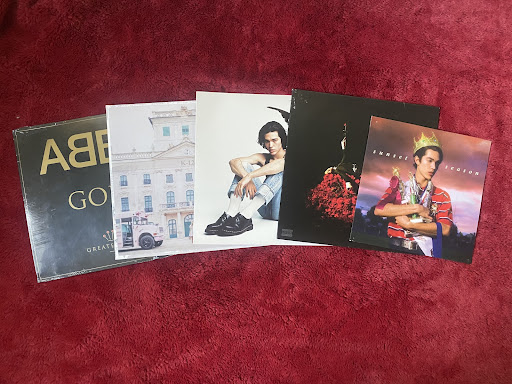Due to advances in technology over the past decades, we are constantly changing how we listen to music, the current most popular way is through media apps like Apple Music or Spotify but old trends of listening and playing music on vinyl records are coming back in a wave of renewed popularity.
Vinyl records died in the late 80s - early 90s when CDs became the dominant medium of choice. But during the 2020 pandemic, vinyl record sales began to soar, making a huge comeback, with over 43.5 million records had being sold in the U.S.A. alone in 2022.
Surprisingly, it's not the older generations who grew up in the 80s bringing back the record, but instead the younger demographic like teenagers and young adults. Younger generations who had no previous experiences of physical music consumption seem to be curiosity driven, leading them to be further interested with the hobby of collecting them.
The popularity and appeal of these records has grown increasingly higher due to the marketing of the vinyls, celebrities, and record companies releasing them with fun colors and shapes, posters, wall decor, special editions only released in select areas, and on the rare occasion, hidden tracks that aren’t on any streaming services and can only be listened to on the vinyl. All together, these create a product ten times more appealing than just a regular blank, boring record.
Because vinyls are such a hit, companies are trying to find new ways to make production more eco-friendly to reduce impact on the planet. Records are made with PVC, which is made from refined oils, meaning these can take well over 1,000 years to decompose. PVC is classified as one of the most environmentally harmful plastics, production alone releases toxic and chemicals into water, air, and food chains, and with the rapid growth in popularity and higher demand for these vinyls to be pushed out the environmental impact is rapidly growing.
Luckily, companies like TC are helping to bring down these harmful ways of creating vinyl by using sustainably sourced and recycled materials and ink that contains organic compounds, which helps to contribute to further protect the ozone layer.
Artists, like Jada G, continue to follow in these footsteps of good examples and push to make any vinyl records that they sell more eco-friendly. In March 2019, Jada G launcher her debut album Significant Changes, under the record company Ninja Tune, which is all about the environment and helping people to understand how they interact with it. On the back covers of all her vinyls, it states that all sold records are carbon-neutral and all emissions generated are offset, she also cut out the use of shrink plastics in the packaging of all her records.
Vinyl records also offer their own distinct cultural experience that sets them apart from digital streaming. The actual process of placing the needle on the grooves of the records, the sound of the static pops while waiting for the first song to begin, and flipping the record over to the other side to do it all over again offers a form of authenticity and, for some, nostalgia that digital streaming platforms just cannot offer.
With the current success and growth in popularity of vinyl records, they are expected to stick around a long while longer, as they are more than just a trend, they’re an experience. Digital music will always be at the tips of our fingers, but nothing beats the physical appeal of music on a turntable.



